Looking to the Horizon: how Guerrilla moved on
Dutch studio's next is filled with promise, robots and loot.
A conversation about video gaming's greatest gunsmiths wouldn't be complete without mention of Guerrilla Games. The Amsterdam studio's Killzone series has always been anchored by the intense physicality of its weapons: their solid handling, their booming audio, the deliberate smack with which every bullet lands. They are true craftsmen, no doubt, though perhaps not the artists and inventors you find elsewhere in this subset of game design - the minds who cooked up the gravity and portal guns, the BFG and railgun, Titanfall's smart pistol, or the eccentric, asymmetric balance of the first Halo's weapon set. Those were guns that could change the world around you, or the way you interacted with it, or both.
Guerrilla may finally be ready to enter that company, however. Its next PS4 game, Horizon: Zero Dawn, features a wonderful thing called the Ropecaster. It's not the game's signature weapon; that honour goes to the bow wielded by our heroine Aloy, which with its tribal style and high-tech components encapsulates Horizon's theme of pitting the primitive against the futuristic (or, to put it another way, cavemen against robot dinosaurs). But at the hands-off E3 demo I attended last month, it was the Ropecaster that really fired the imagination.
You caught a glimpse of it in the stage demo during Sony's conference: a sort of harpoon gun that fires twice, securing two ends of a rope to creatures or the environment. On stage, Aloy was shown using repeated quick shots to pin down a giant laser-spitting robotic T-Rex called a Thunderjaw, holding it still so she could shoot off some armour plating with her bow. In our private demo of the same scene, Aloy only managed to secure its head, keeping its swiping melee attacks at bay but still allowing the machine to pivot and target her with its lasers.
Prior to the big fight, our demonstrator showed the Ropecaster at work with a crowd of the stag-like Harvester machines, which graze peaceably until provoked - at which point, the herd will flee while two alpha machines turn to defend themselves, working together against their hunter. Using the Ropecaster to lay an explosive tripwire trap - every weapon in Horizon has slots for three different kinds of ammo - the demonstrator then spooked the herd with an explosive arrow, driving them into the trap for the kill. When turned on by the alphas, he used the Ropecaster to leash one of them out of range while he dealt with the other.
In short, the Ropecaster plays off the behaviours of Horizon's robotic beasts to offer a remarkable level of combat control and some pretty interesting tactical options, all delivered with Guerrilla's trademark definition and impact. As a powerful trapping tool, it also reinforces Guerrilla's concept of Aloy as a hunter and explorer rather than warrior. Overall, the short demo scene recalls the fleeting high points of 2013's Killzone: Shadow Fall, when its oppressive combat corridor was allowed to open out and the possibilities of its clever support drone could be properly exploited. In theory, Horizon can never retreat back into that corridor, because it is an open-world game and an action-RPG.
This, then, is the game Guerrilla has been threatening to make for years. The developer's technical command of successive generations of PlayStation is beyond reproach, but it has always struggled to open out its designs within Killzone's strictly delineated theatre of war. That has been a gorgeous but clay-footed series from the start. It was time for something new.
Soft-spoken game director Mathijs de Jonge, who headed development on Killzone: Liberation for PSP and then the series' two PS3 instalments, tells me he has been working on the studio's next move since Killzone 3 shipped in 2011 - starting with a deliberately blank slate. "What we did, after we shipped Killzone 3, we asked everybody in the company to pitch ideas for any kind of concept they wanted to make. We got about 30 or 40 different concepts then, ranging from racing games to puzzle games to first-person shooters to action adventures; there was a lot of different stuff. But a couple of game concepts stuck out, one of which was the basis of Horizon."
That concept was for a game set in the far future, 1000 years from now, after human civilisation has all but wiped itself out. Huge, sci-fi cities have become ancient ruins and Earth has largely been reclaimed by nature. Humans have re-emerged as semi-primitive tribes, surviving by hunting, gathering and scavenging technology and artefacts; the world is also populated by mysterious machines resembling (and behaving like) animals and dinosaurs.

We likely won't learn much more than that about Horizon's setting before the game launches in 2016. The mysteries surrounding the provenance of the robots, their current unbalanced behaviour, and the long-forgotten fate of the "Old Ones" are, de Jonge hopes, what will propel players through the game. "The whole game is built on mystery," he says. "We're also building a world that hopefully invites exploration, a world that looks really dynamic and beautiful, so there are a lot of areas that have this sort of majestic, natural feel to them. But then, adding a layer of all these mysteries, that will hopefully pull the player in all directions... and they can start piecing these clues together and figure out what actually happened."
The other component of the internal pitch for Horizon was that it would be a third-person, open-world action adventure, with light role-playing influences. This was where the studio knew that it would be stretching itself. "It was the most ambitious project," de Jonge recalls. "For a long time, we discussed how we can actually make this, because it's open-world, it's an action adventure, it has RPG elements in it, it has a third-person camera... coming from a first-person studio, that's a lot of new things. It has been very challenging."
For almost two years, as the majority of the studio worked on Killzone: Shadow Fall, de Jonge led a "skeleton crew" of between 10 and 20 people hammering out what would be Horizon's core. They started with exploration, knowing it was where a studio focused on linear shooters would have the most learning to do, and within four or five months had worked in a rough combat encounter that was "made out of Duplo blocks" but solid enough for the team to keep returning to as the focal point for the game's fun. Then they began to grapple with the classic problems of open-world game design: how do you fill all this space? What activities feel appropriate to the game's theme? How do you keep the main storyline and side-quests in proportion with each other?

De Jonge admits that they're still figuring out some of the answers - despite the game being in full production, with a large team, since Shadow Fall shipped a year and a half ago. "You can develop in so many directions, you have so many options. But there is always a schedule, always deadlines. You have to pick your battles and make sure you choose the right thing. You have three ideas: which one will be really the best one and is actually feasible? But that's game development!"
The hunt-flavoured combat certainly seems like a sound starting point, thanks to that rope gun and the stellar robot designs which, from inquisitive scanners to grazing harvesters and rampaging Thunderjaws, have clearly articulated behaviours and relationships. "There's a lot of ways that you can play with these robots," de Jonge says, "especially because they're based on technology, so they run on power for example, they have eyes that you can blind, there are armour plates that you can shoot off and there might be different types of materials underneath. There are a lot of things that we are doing with just the fact that they're machines and they have all these interactive components. And there's also some level of co-operation between these machines, and what the rules are... every robot that we design has a purpose in the whole ecology of these robots. And that's something you can interact with as well: you can observe, and you can follow them and see what they're doing, and then uncover why they are co-operating."
The little we know about the game beyond its combat remains impressively cohesive, keeping its attention squarely focused on the thematic and systematic possibilities of these robots and the fantasy of being a futuristic-prehistoric hunter-gatherer. Aloy is a master craftsman; using natural materials and robot parts to build new weapons, ammo types, tools and traps will be perhaps the most prominent element in the game's lightweight RPG system. There are echoes of The Witcher and Monster Hunter in the idea of tracking down a powerful mechanical dinosaur to extract some rare component for your next bow. The game's "loot economy" will extend past the player to the varied tribes of this post-Earth: we're shown concept art of a bazaar where traders in robes haggle over machine parts, and the frame for the demo is that the canisters on the backs of the grazing robots are a critically important resource to one of the tribes.

There was an encouraging trend towards diversity at this year's E3 - the d-word itself got pointed mentions on both Microsoft's and Sony's stages, and who can forget the moment the Ubisoft conference passed the Bechdel test (for gender and race) when Angela Bassett and Aisha Tyler chatted? Horizon, with its practical and resourceful female lead, was a visible part of that trend, although de Jonge suggests Aloy arose naturally from the game concept, rather than as a deliberate reaction to gaming's recent and painful pangs of self-examination on this score.
"We always felt that we wanted to have a female protagonist for this game, we felt that it fitted best... it has always been Aloy for us." he says. "We were looking for a character that was sort of agile and clever and strong at the same time: so the characters that we used as reference were Sarah Connor from Terminator, Ripley from Alien." He doesn't shy away from her resemblance to the Game of Thrones character Ygritte, as played by Rose Leslie in the TV series, calling the fearless Wildling a recent inspiration and a "nice coincidence".
E3 2015 was notable for another kind of diversity, too: a diversity that saw blockbuster gaming shed an unhealthy fixation with "mature" ratings, graphic violence and cynical grit, with new reveals as likely to feature robot dogs or cartoon pirates as a stab in the neck. Could what pop-cultural historians will one day call The Grimdark Years be drawing to a close? It seems like Horizon: Zero Dawn has its part to play here, too, with its vivid natural vistas, its ripping-yarn sense of mystery and adventure, its upbeat post-post-apocalypse, and its unbeatably appealing, AAA-does-B-movie premise: cavemen versus robot dinosaurs! Guerrilla Games is looking towards the next phase of its development with vigour and hope, and on this basis, we're happy to join them.
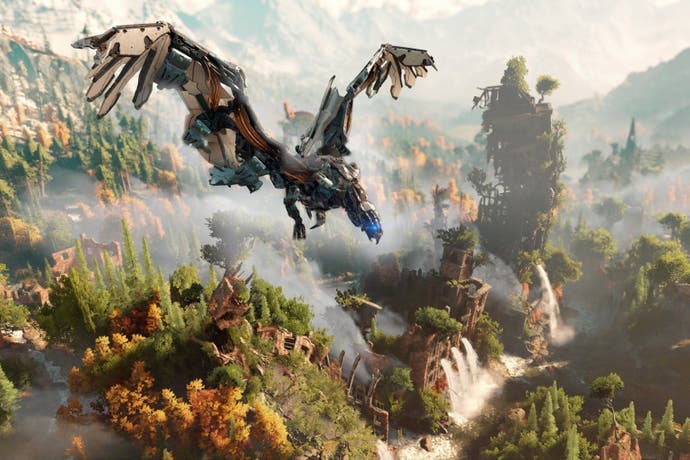


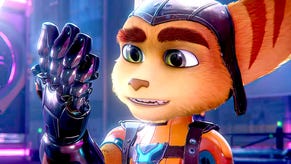
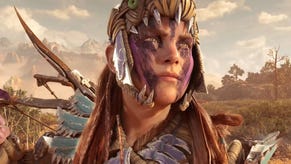

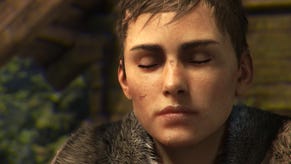
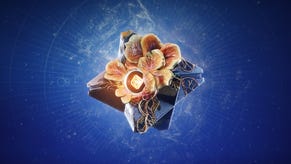
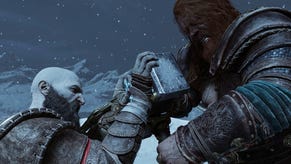





.png?width=291&height=164&fit=crop&quality=80&format=jpg&auto=webp)



